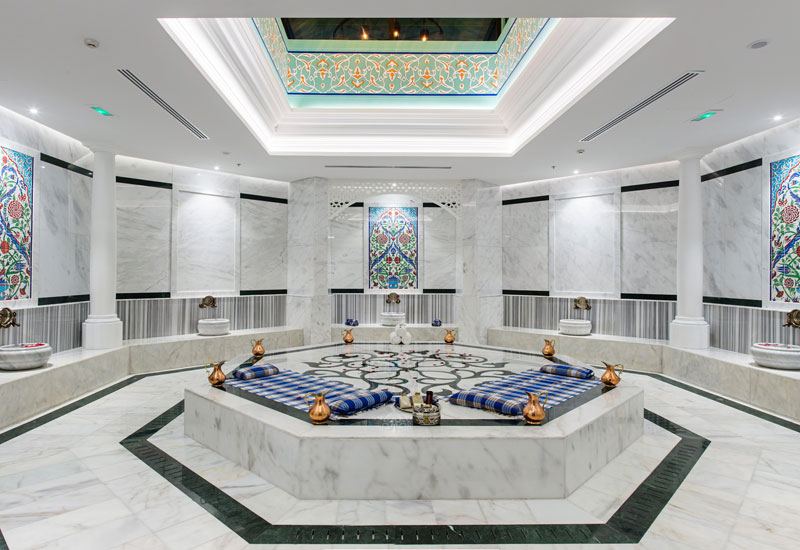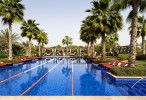 Turkish hammams are said to be the highlight for the next 12 months and beyond; pictured is the newly launched Turkish hammam at the Anantara The Palm Dubai Resort & Spa.
Turkish hammams are said to be the highlight for the next 12 months and beyond; pictured is the newly launched Turkish hammam at the Anantara The Palm Dubai Resort & Spa.
Spas were considered a luxury many years ago. That has changed now. The number of guests looking to experience spas, whether residents, leisure tourists or medical tourists, has gone up. To match the growing demand of the wellness industry, the department of spas is taking on renewed importance. Certainly hotels are reacting to the demand and looking at improving their offering, revealing new packages and treatments, undergoing refurbishment and much more. In addition, the number of spas — and associated revenue — in the Middle East is increasing.
Intelligent Spas’ released a new ‘Spa Development Pipeline Research’, which has identified 139 spa developments that are proposed to enter the GCC between 2015 and 2019, potentially increasing spa numbers in this region by 27%. In comparison, the confirmed developments will see spa numbers increase to 639, up 19% compared to the number of spas operating in the GCC in 2013.
Julie Garrow, managing director, Intelligent Spas says in a statement: “These are the first country-level research reports which provide the spa industry with an accurate list of reported new projects, plus their current development status in terms of if they are in planning, under construction, on hold or abandoned.”
According to this research, Saudi Arabia has the highest industry growth potential, with spa numbers increasing by 34% by 2018, if all reported developments are completed. Oman’s spa industry is set to increase by 23% between now and 2018, based on confirmed spa developments. And Dubai hosts the highest number of spas in the GCC, with more than 190 currently operating and another 34 spas in the pipeline.
And by the end of 2015, the UAE’s spa industry was forecast to achieve revenues of AED 5.5 billion (US $1.5bn), rising to AED 8.3 billion (US $2.26bn) by 2017, making it one of the most valuable tourism-related industries in the Middle East, with the MENA region the second fastest-growing market in the world for spas after sub-Saharan Africa, according to the Global Wellness Institute (GWI). According to GWI’s 2014 Global Spa and Wellness Economy Monitor report, the UAE will top spa growth in the region by 2017, more than doubling current business volume with 17.9% annual growth since 2012.
To this end, Arabian Travel Market (ATM) 2016 will introduce a dedicated Wellness & Spa Lounge for 25 exhibitors representing some of the world’s most recognised health and wellness hospitality destinations. “In our research we found that across all markets, wellness tourism is exceptionally popular, with in excess of 9% year-on-year growth forecasted for the next two years, which is a staggering 50% faster than overall global tourism,” says Nadege Noblet-Segers, exhibition manager, Arabian Travel Market.
“Wellness tourists spend, on average, 130% more than the average international traveller, which presents significant opportunity for the MENA hospitality industry to target this high profile, high spend market segment with a wide variety of experiences, facilities and products to grow market share,” says Noblet-Segers.
In more research, Colliers International has launched its Dubai Spa Benchmark Report, which was based on data from 216 treatment rooms provided by Dubai spa owners and operators. The report indicates a positive outlook for Dubai’s resort spa market with a 6% increase in treatment revenue recorded in H1 2015 and an increase in in-house guests to 74% up from 67% in H1 2013.

| Advertisement |








 Search our database of more than 2,700 industry companies
Search our database of more than 2,700 industry companies









